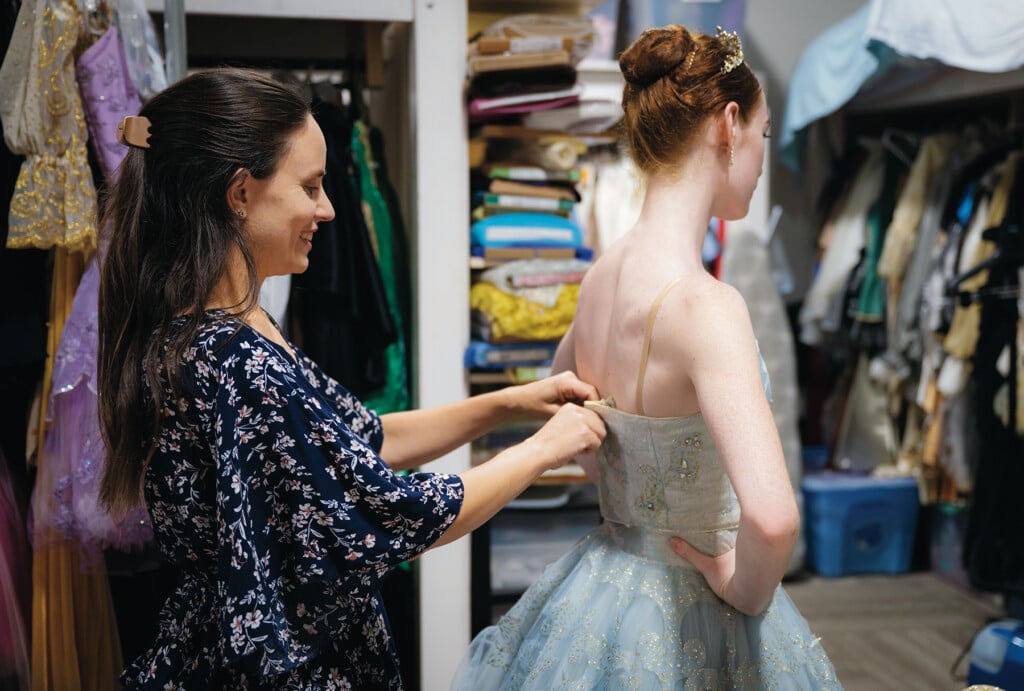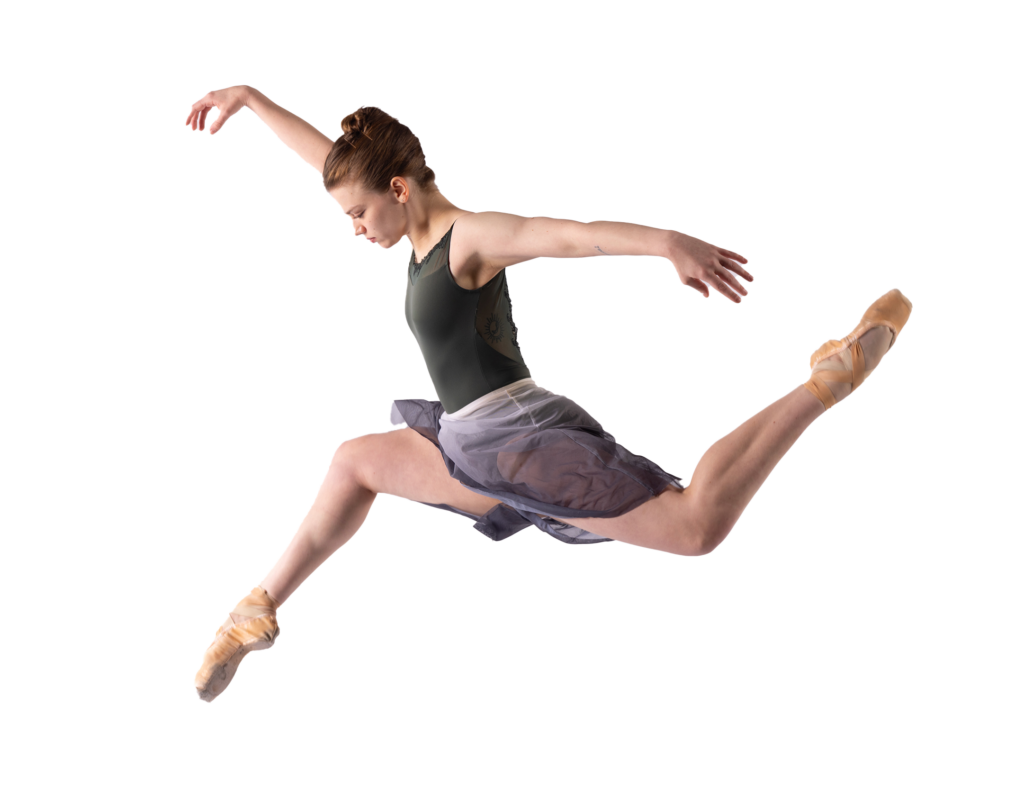Made For The Stage
The Tallahassee Ballet knows how to tell a story in tulle

In the distance, a piano throbs. Occasionally, someone sporting pink tights, a black leotard, and a tiny chignon runs by the door. Then the voice of a ballet teacher sings out, “And again … this time, higher!”
But here, everything is quiet for the moment. In this room, there is no perspiration, no anxiety about a triple pirouette. Here hang only the brilliant costumes the dancers will slip into when the time comes to turn the work of the classroom into the magic of the stage.
This is the costume room of the Tallahassee Ballet, one of the most venerable of the nation’s regional ballet companies. Here is where young dancers and paid professionals begin to truly envision themselves as swans or sylphs, spinning fairies or forlorn princes.
The Tallahassee Ballet began as a small concert group in 1972. Students from local ballet schools joined the then Tallahassee Civic Ballet, rehearsing in founder Helen Salter’s home. Then, parent-made costumes were stored in dancers’ homes and tiaras were tucked under the stairs.
Over the years, the renamed Tallahassee Ballet and its school grew. Studio space fluctuated from the old library on Monroe Street to the Governor’s Club, then a two-story studio on Third Avenue, followed by the Northwood Mall (the site of a new police station), and finally in 2022, the current 14,000-square-foot Northampton Center. The 54 company dancers and dozens of students of the Tallahassee Ballet are delighted to be home at last—in a new facility with three dance studios, a room for sets and props, and a 1,270-square-foot costume room.
Looking around the costume room, Ann Todd, costume designer emeritus, smiles. “I came to the Tallahassee Ballet in 1988 … when my children were young,” she says. “It’s amazing that there are now probably 3,000 costumes stored here—plus headpieces and tiaras, not to mention the bolts of fabric, thread, laces, feathers, and fringe. And to think, in the beginning, we didn’t even have patterns. We bought some tutus from a lady in Tampa.”
Todd had joined the cadre of stitchers and costume creators—mostly devoted mothers—who went on to become experts in professional dance costuming. “I owned a clothing shop and got used to doing alterations. So, really, this was the perfect job for me,” says Todd. Poring over books of period costumes and photos of dancers from American Ballet Theatre, and later, going to several seminars on costume creation at a North Carolina establishment called Tutu.com, Todd says she and a small group of seamstresses learned the craft of building costumes that can withstand being stretched, twisted, sweated on, and rolled on the floor.
In this room, the repertoire of 53 years of ballets are packed on nearly 150 feet of double racks—the collection represents at least 11 full-length classics as well as brand-new choreography. Here are Clara’s dresses from The Nutcracker; men’s jackets heavy with gold braids; rows of long blue, rose, pink, and white tulle skirts; beaded ball gowns; peasant skirts; Arabian pantaloons; and open shelves of jeweled tutus, their stiff netting glittering with rhinestones and pearls.
Sewing machines are lined up against one wall, where the seamstresses and designers create and alter the costumes for one Snow Queen after another, or cygnets who have grown into swans. This room, according to a ballerina who has danced with the Tallahassee Ballet for the last 17 years, is where the designers and the seamstresses turn the hard work of the practice studios into the magic that will ignite the stage. “This is where I truly become the Dewdrop Fairy,” says willowy Paige Centers.
Centers, one of the principal dancers with the company, remembers the youthful thrill of being called to the costume room for a fitting. “Here were professional dressmakers, creating something beautiful for my body alone,” she recalls. “And in a way, I could make the costume part of the dance, part of the character.”
Another dancer, who is also a gifted choreographer, is Sophia Lutinski. She picks up a short, gilded tutu, running her hands over it as if caressing vibrant memories. “It’s from The Nutcracker,” she says. It represents the dance of the Marzipan, and it isn’t a new costume; in fact, Lutinski says it’s “in retirement” now, a piece from 50 years ago. Yet, the rhinestones and embossed silk still sparkle.
Lutinski, who choreographs contemporary pieces, says she brings the costumers into the rehearsal space to see the movements of a new work, discuss the mood with them, and decide how fabric—its weight, its color, and even its tactile qualities—will affect the story the dance is telling.
And so, if you happen by a rehearsal of the Tallahassee Ballet and from a nearby room hear a conversation about “pancakes, platters, powder puffs, and bells,” understand they are talking about types of tutu shapes. If you hear a voice complaining “It’s too tight in the basque,” know the hip covering needs letting out. And if you pick up a male dancer joking, “That bodice fabric was as slippery as motor oil,” understand that the costumers and designers will resolve the problem. And the show will go on.




